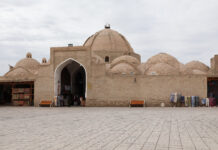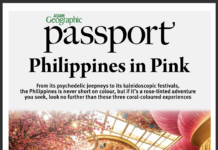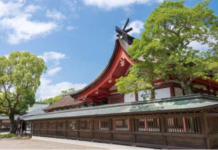
From old world to new
Text Kamin Mohammadi
As a child in Tehran, my favourite season was winter, with its heavy snowfalls and clear sunny days. The first day of snow was especially magical: Waking up in the morning to find that the world had turned white overnight, I would rush to listen to the radio announcements to find out which schools were closed due to the snow.
If my school was announced, my sister and I would ring our cousins and say excitedly, “They have closed the world!”, urging them to come out to play. A day of snowball fights and building snowmen would ensue, punctuated only by mealtimes in which we would be fed hot aash, a broth made of herbs, vegetables, noodles and legumes and sprinkled with hot fried mint and onion rings.
The Iranian capital’s location, huddled into the lap of the Alborz mountain range, means that the seasons stay distinct. Residing at the lofty height of 1,191 metres, Tehran boasts winters that are always bright and cold, and snow is an annual event. The city has none of the jewel-like domes of Isfahan, nor the romantic gardens of Shiraz, but with its skyscrapers reaching into the clouds, its frenzy of motorways and the bustle of crowds and cars jostling for supremacy at every street corner, Tehran has enough of a buzz to be a Middle Eastern Manhattan.
Iranians are great walkers and, living as we do on the skirts of the Alborz, Tehranis like nothing more than dawn hikes. Even in the winter, I like to get up with the sun and take the hiking trail up through the village of Darband, watching the sun slant over the city – before the fog of pollution descends.
Halfway up the hill, before the rash of restaurants that are built overhanging the rushing streams, there is a tiny scruffy place that is perfect for breakfast after a lung-expanding walk trying not to slip on the icy puddles. Next door to a barbari bread baker, it serves up all the traditional Iranian breakfast dishes, along with piping hot bread.

When the snow has turned to slush, I head downtown to Aban Street and Tehran’s coolest café, Café 78, which is owned by an Iranian female photographer who spent years living in San Francisco and Berlin before resettling back in Iran. Popular with expats and artists, who love the tall windows looking out onto the street, it has a wonderfully eclectic menu that includes sharbats (traditional fruit syrup drinks), which patrons enjoy while engaging passionately in discussions on the latest cultural events. Art used to be displayed on the walls, but now a small gallery draws a steady stream of clients down the stairs to see exhibitions of contemporary Iranian art in the basement.
In the years before the Revolution, one of my aunts – studying at Tehran University and who appeared to me the epitome of cool – would sometimes pick me up from school and take me for coffee. She used to take me to Café Naderi (572 Jomhuri Avenue, between Ferdowsi and 30 Tir Street), Tehran’s oldest European-style café.
Here, revolutionary thinkers, writers and artists held court, and I saw myself as the last word in sophistication, sitting opposite my intellectual aunt and sipping my café glacé – a mixture of white coffee and vanilla ice cream.

Café Naderi still serves the best café glacé in town and what it has lost in sophistication, it makes up for in pre-Revolutionary ambience – the original menus remain, as do, seemingly, the waiters, who all seem ancient. But even if the waiters haven’t changed, the young intellectuals have been replaced by their contemporary counterparts: intense young men with hair skimming their collars as they expound the relative merits of various political ideologies to pretty young women in butterfly-coloured headscarves, in a haze of cigarette smoke.
Last December, it snowed more than it had for 30 years. One night, driving home after a party, I sat in one of the traffic jams that clog the highways even in the early hours. Suddenly, silently, the snow began to fall. In no time, impatient car horns fell quiet and people were leaning out of their car windows to watch the huge tumbling flakes, to feel them on their faces. Before long, the motorway was an impromptu car park, as we all abandoned our cars to run out into the road and pelt one another with fistfuls of snow. In that moment, the alchemy of snow and the Tehrani soul once more transformed the stressed out, fast-paced city into a playground, a symphony of laughter and shrieks, all normal life forgotten for the sake of a snowball fight.
For more stunning stories and photographs from this issue, check out Asian Geographic Issue 112, 2015.










